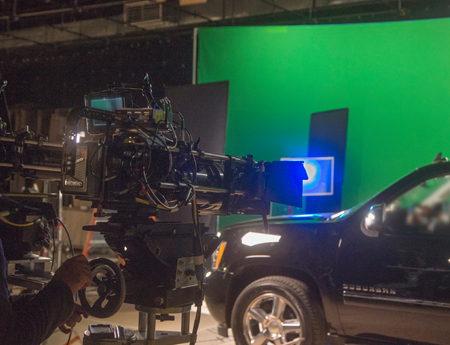Ultra HD Needs Standards To Go With Practices

There is little doubt that new Ultra HD or 4K television sets will be one of the most heavily hyped items during the holiday season and at the International Consumer Electronics Show to be held Jan. 7-10 in Las Vegas. But a key motivator for the format’s success will depend on the development of technologies to produce 4K content.
And on that front, the news is mixed. A number of major camera and lens manufacturers, including Canon, Fujinon, Sony, Panasonic, For-A, Vision Research and JVC, have launched 4K gear that has been used for NFL, Major League Baseball and NASCAR productions, blockbuster theatrical films and primetime TV shows.
Such primetime series as The Blacklist, The Michael J. Fox Show, Community and Masters of Sex have been shot in 4K with Sony’s 4K cameras, reports Rob Willox, Sony Electronics director of marketing, large sensor cameras. “The production of 4K content is really speeding up,” he says.
Adds George Hoover, CTO at mobile production company NEP, “4K workflows for digital cinema and primetime television exist and work just fine. But if you look at live production, there is really no production and no established workflows.”
Some of this reflects the lack of standards for Ultra HD technologies. There is, for example, no standard for broadcasting Ultra HD signals, and different resolutions are used in digital cinema (where 4K film projection is done at 4096 x 2160 pixels) than in television (where 4K Ultra HD cameras capture images at 3840 x 2160 pixels). Very importantly, the Society of Motion Picture and Television Engineers is still working on standardizing a serial digital interface that can handle the bandwidth needed for Ultra HD production.
“We need standards to streamline the process of production,” says Eric DuFosse, VP of live solutions at Grass Valley.
No 4K Game Plan
Broadcasting & Cable Newsletter
The smarter way to stay on top of broadcasting and cable industry. Sign up below
Problems are particularly apparent in live sports production, potentially a big driver of Ultra HD set sales. While current cameras and lenses produce very high-quality images, they were generally designed for movie or high-end TV production. “They have to be adapted for live production,” NEP’s Hoover says.
“There is an emerging need for quick-turnaround 4K production, and the tools to make that happen are far from ready to go,” adds Mike Bergeron, senior vertical sales manager at Panasonic.
While major parts of the broadcast infrastructure will have to be rebuilt to handle 4K images, vendors have been working to develop technologies for the transition with both 4K-capable gear and high efficiency video compression (HEVC) systems to reduce bandwidth needs. Elemental’s HEVC compression system was recently used in live 4K coverage of the Osaka Marathon in Japan. “End-to-end production systems are maturing pretty fast,” says Keith Wymbs, Elemental VP of marketing.
Other companies have been upgrading their products to handle 4K production. Snell’s Kahuna production switcher was used in several 4K presentations at the IBC show in September. “We want to offer support for our clients throughout the 4K production chain,” says Paola Hobson, Snell senior product manager.
Much of this reflects a larger push to make equipment and software more flexible. “We have been rearchitecting the whole pipeline so that it is capable of handling what comes along in the future,” says David Colantuoni, product manager at Avid.
WITH 4K, EVERYONE’S A REF
Outside of primetime TV production, one of the most notable examples of how 4K is affecting the TV industry can be found in the use of 4K cameras to show replays in sports. “They were used in several key plays during the World Series,” says NEP CTO George Hoover, who estimates that 4K cameras were deployed in about 300 sports events over the past 18 months.
Using a technique called “cut out and zoom,” producers will zoom into a portion of the 4K image (which has four times the pixels of a standard HD image) and “cut out” the area that might show whether a tag was made or a foot stepped out of bounds.
“Workflows now allow for very rapid turnarounds,” notes John Studdert, VP of strategic sales at Sony Electronics, which sells 4K cameras that have been used at the World Series and other major sports events. “They are becoming a standard production tool.”
